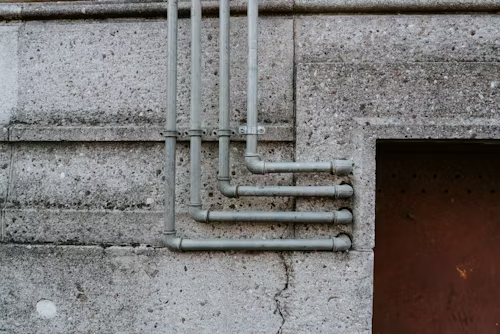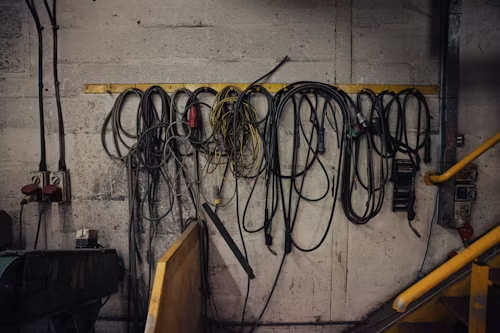When it comes to building reliable underground systems, PVC conduit, DWV pipe, and concrete pits don’t usually get much attention. Yet, they are the backbone of critical infrastructure, keeping electrical cables safe, ensuring proper drainage, and protecting utilities in demanding environments. No matter if it’s on a commercial site or a residential build, these parts need to perform flawlessly for the infrastructure to last for decades.
The challenge, however, is that even the strongest materials can face issues if they’re not installed or maintained correctly. Small mistakes can lead to big problems. In this article, we’ll look at five of the most common challenges with PVC conduit, DWV pipe, and concrete pits, and their practical fixes.
Challenge 1: Misalignment During Installation
One of the most common issues with PVC conduit and DWV pipe installations is misalignment. When trenches are uneven or connections are rushed, pipes can shift out of place. Even slight misalignments may not be obvious at first but can create serious problems over time, such as poor water flow, recurring blockages, or stress on electrical wiring. In drainage systems, this often leads to leaks and backflow, while in electrical setups, it can compromise safety and performance.
Fix: The key to preventing misalignment is preparation. Trenches should be properly graded and bedded with stable materials before laying the conduit or pipe. Contractors can also use alignment tools, like laser levels, to ensure accuracy during installation. Taking these extra steps at the start saves costly repairs and system failures later on.
Challenge 2: Water Ingress in Concrete Pits
Concrete pits are designed to protect underground utilities, but one of their biggest vulnerabilities is water ingress. If pits are not sealed properly or are installed in areas with poor drainage, rainwater and groundwater can seep inside. This creates multiple risks, such as electrical hazards if the pit houses cables, structural weakening from water pressure, and even contamination issues in some drainage setups. Over time, standing water can shorten the lifespan of both the pit and the equipment it houses.
Fix: The solution lies in effective sealing and drainage planning. Using watertight pit lids and high-quality sealing compounds around joints can significantly reduce the risk of water entry. For sites prone to flooding, adding external drainage channels or sump systems helps keep pits dry. Proper site assessment before installation also ensures that pits are located in areas less likely to collect water.
Challenge 3: Pipe Blockages and Flow Restrictions
Blockages are a frequent challenge with DWV pipes, especially when slope and alignment aren’t carefully managed. If the pipe gradient is too shallow, wastewater won’t flow efficiently, leading to sediment buildup and eventual clogs. On the other hand, too steep a slope can cause liquids to outrun solids, leaving debris behind. In addition, debris from construction, tree roots, or poorly fitted joints can further restrict flow. The result? Backups, foul odors, and costly maintenance headaches.
Fix: The best prevention is proper installation. DWV pipes should always be laid at the correct gradient, usually around 1–2% for effective drainage. Using smooth fittings, ensuring airtight joints, and installing inspection openings at key intervals make future maintenance easier. Regular checks and cleaning can also stop small blockages before they escalate into major issues.
Challenge 4: Material Damage from Heavy Loads
Construction sites are tough environments, and both PVC conduit and concrete pits are often exposed to heavy machinery and backfill pressures. If not protected, pipes can crack under the weight of compacted soil or shifting ground, while concrete pits may settle unevenly or fracture under excessive load. These kinds of damage compromise the integrity of the entire system, leading to costly repairs or even dangerous failures.
Fix: The solution begins with choosing the right materials for the site conditions. For areas subject to heavy traffic, load-rated concrete pits are essential, while PVC conduit should be encased in protective covers or installed with adequate surrounding support. During backfilling, using controlled compaction methods rather than aggressive machinery also reduces the risk of crushing or displacement. Careful planning ensures these parts can withstand the weight of both the construction process and long-term use.
Challenge 5: Long-Term Wear and Environmental Factors
Even the best-installed PVC conduit, DWV pipe, and concrete pits face challenges from long-term environmental exposure. PVC can degrade over time when exposed to UV light or harsh chemicals, while DWV pipes may suffer corrosion from acidic soils. Concrete pits, too, can deteriorate due to freeze-thaw cycles, chemical exposure, or prolonged water contact. Left unchecked, these factors can reduce the lifespan of the infrastructure and lead to costly replacements.
Fix: Selecting materials designed for the specific environmental conditions is crucial. Use UV-resistant PVC for any sections exposed to sunlight, and choose chemical- and corrosion-resistant pipes for areas with aggressive soil or wastewater. For concrete pits, applying protective coatings and ensuring proper drainage around the pit helps prevent water damage and erosion. Regular inspections and maintenance further extend the life of these essential components.
Conclusion
PVC conduit, DWV pipe, and concrete pits may operate quietly underground, but their performance is critical to the success of any construction or infrastructure project.
By investing in proper installation, selecting the right materials, and committing to regular maintenance, contractors and property owners can prevent costly issues and ensure long-lasting functionality. Taking these proactive steps protects the system and saves time, money, and stress in the long run.




